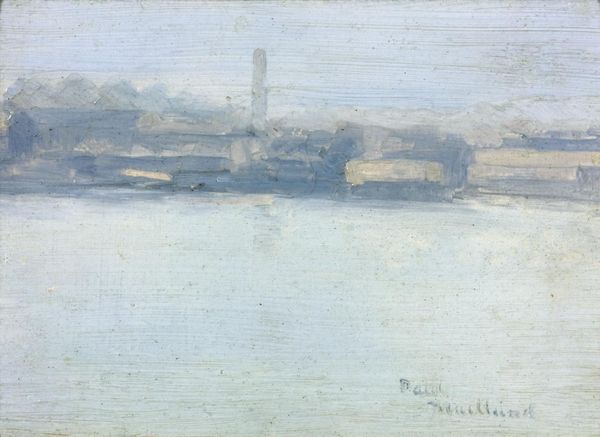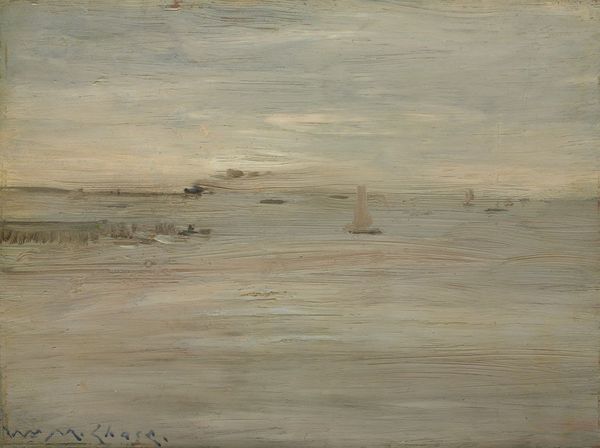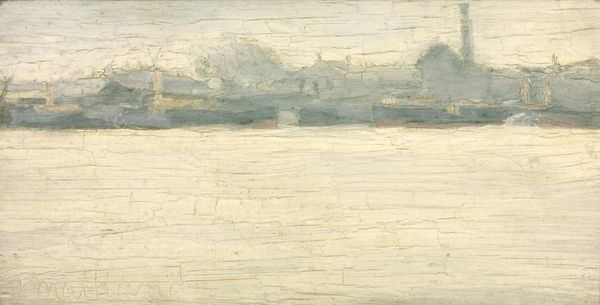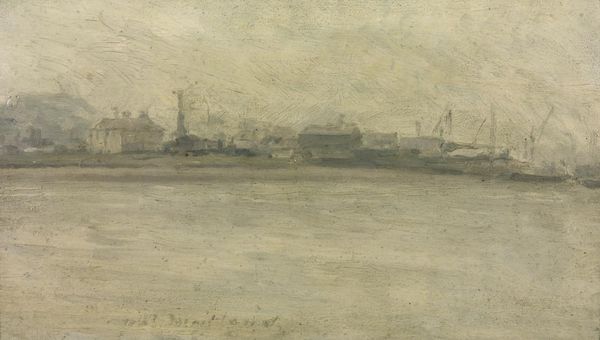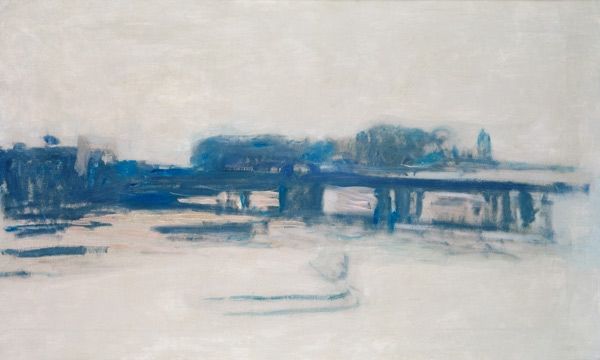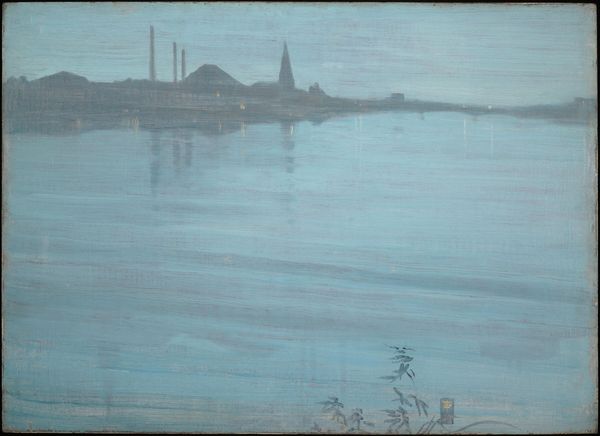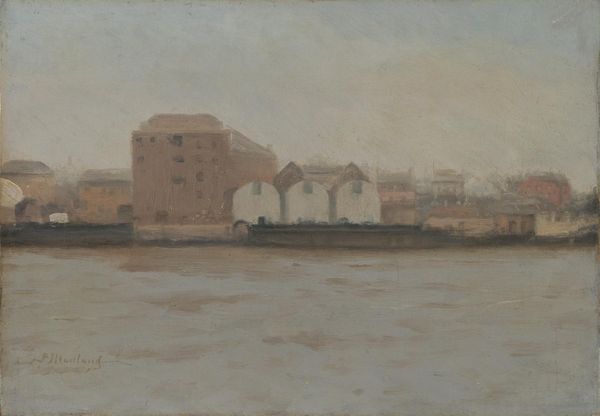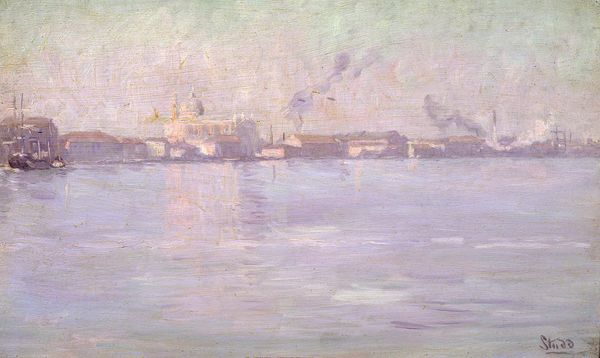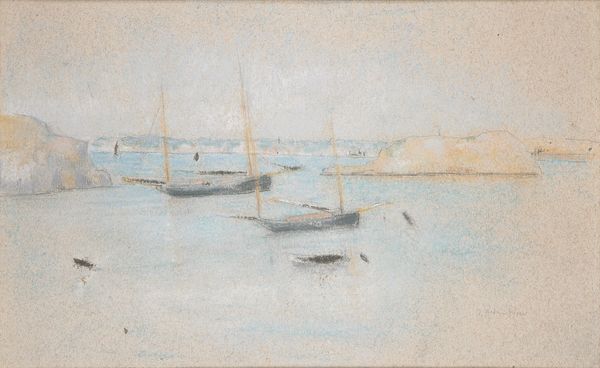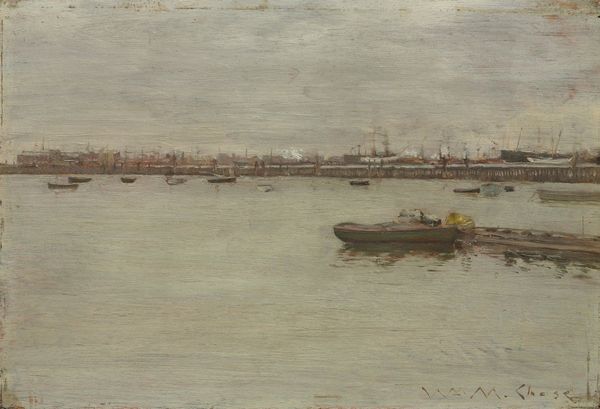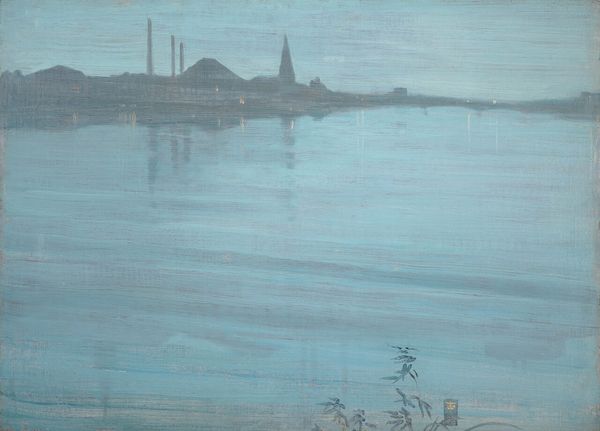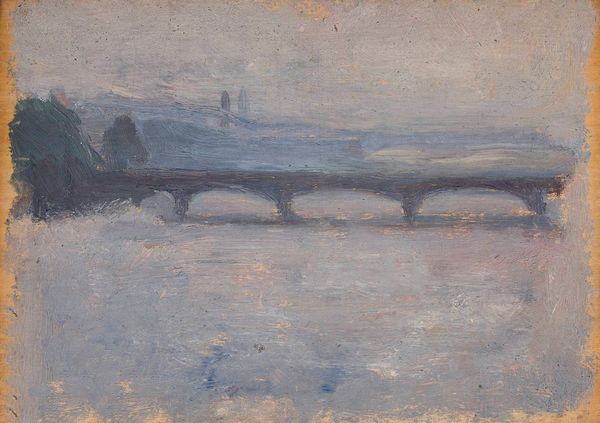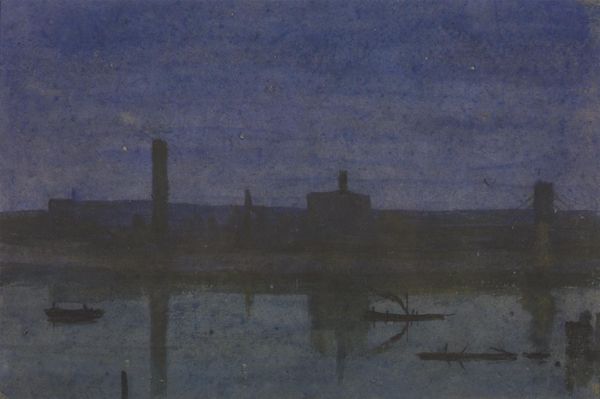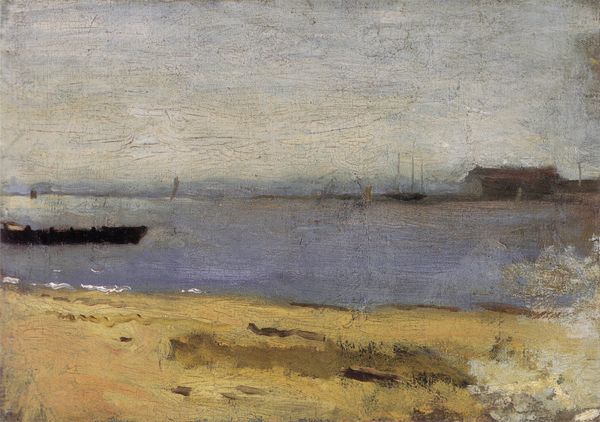
Copyright: Public Domain: Artvee
Editor: Vilhelm Hammershoi's oil painting, "The Harbour of Copenhagen seen from Kvaesthgusgade," made between 1907 and 1908, has this incredibly muted and calm feeling. It’s almost monochromatic, but it's still so detailed, somehow. What jumps out at you? Curator: Well, the near absence of color immediately speaks to the broader cultural mood. Turn-of-the-century Copenhagen was undergoing significant industrialization and social change. Hammershoi’s muted palette and emphasis on interiority, and in this case the liminal space of the harbour, can be read as a quiet resistance to the rapid modernization of urban life. What do you notice about the figures that populate the edge of the harbor? Editor: They seem so small, almost swallowed by the landscape. Like tiny silhouettes. Curator: Precisely. That is classic Hammershoi. This composition highlights the individual's diminishing scale relative to the burgeoning urban environment, which of course could be interpreted through a Marxist lens as the alienation of the worker from his labor. But perhaps it’s also a commentary on Denmark's place on the world stage at the time. Denmark being a smaller power navigating turbulent political waters. Editor: So the limited palette, the tiny figures, and the overall calm all tie into how Denmark was evolving back then? That’s fascinating; I’d never considered how deeply ingrained politics could be even in something so serene. Curator: Indeed. It is precisely this tension between the apparent calm and underlying social anxieties that makes Hammershoi's work so compelling. Editor: I see it now, the image feels a little less serene, a little more melancholy, knowing the cultural context. Thanks so much!
Comments
No comments
Be the first to comment and join the conversation on the ultimate creative platform.
